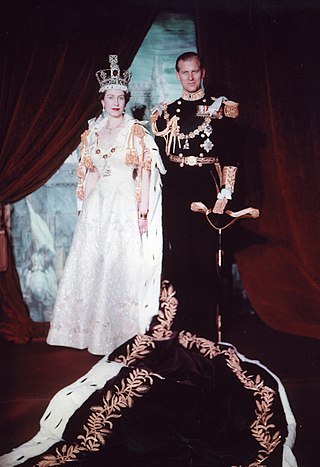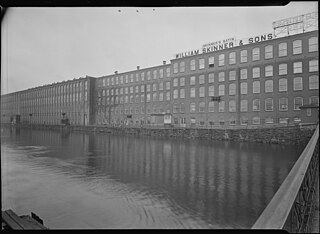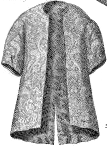
Weaving is a method of textile production in which two distinct sets of yarns or threads are interlaced at right angles to form a fabric or cloth. Other methods are knitting, crocheting, felting, and braiding or plaiting. The longitudinal threads are called the warp and the lateral threads are the weft, woof, or filling. The method in which these threads are interwoven affects the characteristics of the cloth. Cloth is usually woven on a loom, a device that holds the warp threads in place while filling threads are woven through them. A fabric band that meets this definition of cloth can also be made using other methods, including tablet weaving, back strap loom, or other techniques that can be done without looms.

Velvet is a type of woven fabric with a dense, even pile that gives it a distinctive soft feel. Historically, velvet was typically made from silk. Modern velvet can be made from silk, linen, cotton, wool, synthetic fibers, silk-cotton blends, or synthetic-natural fiber blends.

Halstead is a town and civil parish in the Braintree District of Essex, England. Its population of 11,906 in 2011 was estimated to be 12,161 in 2019. The town lies near Colchester and Sudbury, in the Colne Valley. It is twinned with Haubourdin in the Nord department of France.

Morris, Marshall, Faulkner & Co. (1861–1875) was a furnishings and decorative arts manufacturer and retailer founded by the artist and designer William Morris with friends from the Pre-Raphaelites. With its successor Morris & Co. (1875–1940) the firm's medieval-inspired aesthetic and respect for hand-craftsmanship and traditional textile arts had a profound influence on the decoration of churches and houses into the early 20th century.
Courtaulds was a United Kingdom-based manufacturer of fabric, clothing, artificial fibres, and chemicals. It was established in 1794 and became the world's leading man-made fibre production company before being broken up in 1990 into Courtaulds plc and Courtaulds Textiles Ltd.

Cloth of gold or gold cloth is a fabric woven with a gold-wrapped or spun weft—referred to as "a spirally spun gold strip". In most cases, the core yarn is silk, wrapped (filé) with a band or strip of high content gold. In rarer instances, fine linen and wool have been used as the core.

Braintree is a town in Essex, England, and is the principal settlement of Braintree District. It is located 10 miles (16 km) north-east of Chelmsford, 15 miles (24 km) west of Colchester and 35 miles (56 km) north-west of Southend-on-Sea. According to the 2021 Census, the town had a population of 43,492; the urban area, which includes Great Notley, Rayne, Tye Green and High Garrett, had a population of 55,793.

Marianne Straub was one of the leading commercial designers of textiles in Britain in the period from the 1940s to 1960s. She said her overriding aim was: "to design things which people could afford. ... To remain a handweaver did not seem satisfactory in this age of mass-production".

Samite was a luxurious and heavy silk fabric worn in the Middle Ages, of a twill-type weave, often including gold or silver thread. The word was derived from Old French samit, from medieval Latin samitum, examitum deriving from the Byzantine Greek ἑξάμιτον hexamiton "six threads", usually interpreted as indicating the use of six yarns in the warp. Samite is still used in ecclesiastical robes, vestments, ornamental fabrics, and interior decoration.
Franco Scalamandré was an Italian-born American co-founder of Scalamandré Inc., a US manufacturer of traditional textiles, decorative textile trims, wall covering, and carpeting.
The Bhutan Textile Museum or the National Textile Museum is a national textiles museum in Thimphu, Bhutan, located near the National Library of Bhutan. It is operated by the National Commission for Cultural Affairs. Since its establishment in 2001, the museum has generated national and international attention and has garnered a substantial collection of antique textile artefacts, exclusive to Bhutan.

Bizarre silks are a style of figured silk fabrics popular in Europe in the late 17th and early 18th centuries. Bizarre silks are characterized by large-scale, asymmetrical patterns featuring geometrical shapes and stylized leaves and flowers, influenced by a wave of Asian textiles and decorative objects reaching the European market in these decades. Bizarre silks were used for both clothing and furnishings. As a description, the term was first used by Dr. Vilhelm Sloman in the title of a book, Bizarre Designs in Silks published in 1953 in Copenhagen.

Queen Elizabeth II's coronation took place on 2 June 1953. Ordered in October 1952, her gown took eight months of research, design, workmanship, and intricate embroidery to complete. It featured the floral emblems of the countries of the United Kingdom and those of the other states within the Commonwealth of Nations, including the English Tudor rose, Scots thistle, Welsh leek, Irish shamrock, Canadian maple leaf, Australian wattle, New Zealand silver fern, South African protea, Indian lotus flower for India, the Lotus flower of Ceylon, and Pakistan's wheat, cotton, and jute.
Isabel Tisdall was a British-based textile designer, who influenced domestic and commercial interior design through Tamesa Fabrics, which she founded in 1964, and via her work with Edinburgh Weavers from the mid 1950s. Prior to that, she had a successful career as a fashion stylist, including a period as fashion editor of Vogue.

Warner & Sons was a British textile manufacturer specialising in silk for the furnishing industry. It wove the coronation robes for both Edward VII and Elizabeth II and had associations with some of the leading textile designers and artists of the 19th and 20th centuries.
Hans Tisdall, was a German-born artist, who worked in the UK as a designer and teacher. He is largely remembered for his bookjacket and textile designs.

The Bocholt textile museum is a museum in Bocholt, a city in the north-west of North Rhine-Westphalia, Germany, part of the district Borken. It is situated 4 km south of the border with the Netherlands. The museum opened in 1989 as one of the eight locations of the LWL Industrial Museum: it is an Anchor point on the European Route of Industrial Heritage.

William Skinner & Sons, generally sold under the names Skinner's Satin, Skinner's Silk, and Skinner Fabrics, was an American textile manufacturer specializing in silk products, specifically woven satins with mills in Holyoke, main sales offices in New York, and a series of nationwide satellite offices in Boston, Chicago, Philadelphia, Baltimore, Cincinnati, Cleveland, Minneapolis, Rochester, and St. Louis. Founded in 1848 by William Skinner as a partnership between himself and his brother-in-law at that time, the company was first established at a long-term location in Haydenville in 1854, as the Unquomonk Silk Mills. Following the Mill River Flood of 1874, Skinner relocated both his home and company to new facilities in Holyoke, Massachusetts, where the company would maintain its mills for the remainder of its existence. By the 20th century, Skinner & Sons had become the largest manufacturer of satins in the world, becoming one of the first to directly market to consumers in 1903, and operated out of the largest silk mill under one roof by 1912. During the 1920s and 1930s the brand was popularized with its usage in Hollywood, with silk gowns made from its satins adorned by such stars as Joan Crawford and Bette Davis on the silver screen. The company would also work extensively with the US Armed Forces during the Second World War, developing improved silk and other textile parachutes. Following a period of decline due in part to an increasingly competitive world market, the Skinner family and other shareholders sold the company for an undisclosed amount on January 26, 1961 to Indian Head Mills, which continued to operate the mills for converting rayon and other synthetics until the closure of the plant as a textile mill in 1963. In the 1970s, the Finished Goods Division of Indian Head was acquired by Springs Global, which used the Skinner name, marketing, and product line until the late 1980s; it has been defunct since that time.
Bed hangings or bed curtains are fabric panels that surround a bed; they were used from medieval times through to the 19th century. Bed hangings provided privacy when the master or great bed was in a public room, such as the parlor, but also showed evidence of wealth when beds were located in areas of the home where. They also kept warmth in, and were a way of showing one's wealth. When bedrooms became more common in the mid-1700s, the use of bed hangings diminished.

A Supertunica is a robe worn by British monarchs at their coronation. It is donned shortly after the Anointing ceremony for the vesting of the Spurs, Sword of Offering and the Armills. Afterwards the Stole Royal and Robe Royal are worn on top of the Supertunica for the crowning of the monarch. The Supertunica, Stole and Robe are replaced with the Imperial Robe for the final procession from Westminster Abbey.














